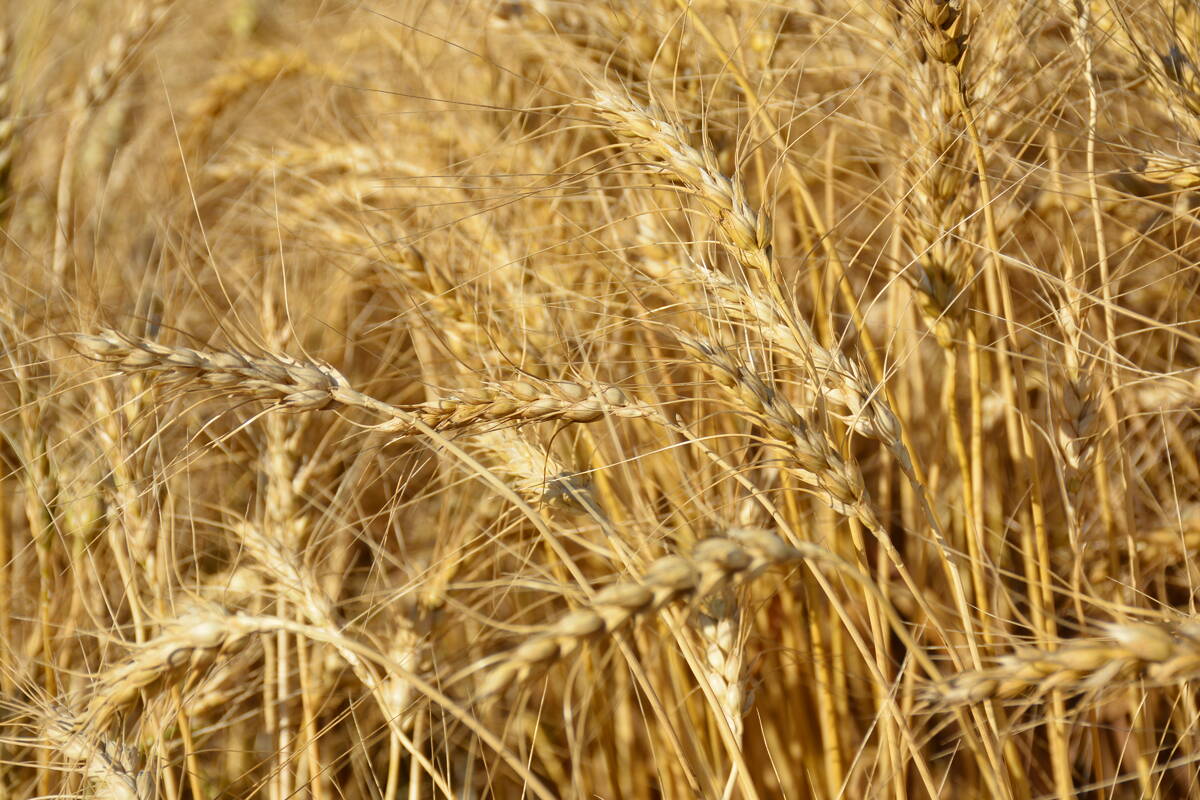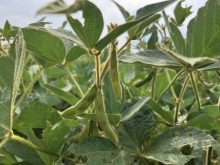A silver lining to climate change is that a warming trend would favour a northern migration for crop production.
That could spell everything from more acres of corn in the West to the development of more diverse crop rotations in Ontario’s Northern Clay Belt, the Thunder Bay region and possibly the Fort Frances/Rainy River area.
Why it matters: Growing soybean production in northern Ontario and northern areas of the Prairies has “untapped potential”.
Read Also

Scientists discover a gene that could triple wheat production
This discovery could give breeders a powerful new tool to boost yields without needing more land, water, or fertilizer.
That’s the “untapped potential” that was part of the discussion during the second annual Northern Soybean Summit last December in Ottawa. Hosted by Soy Canada, the event gathered representatives from the soybean sector’s value chain to address production and processing concerns for the northern tiers of Ontario, Quebec, Manitoba and Saskatchewan.
Each province boasts large tracts of arable land, some of which has been developed, but most of which has yet to reach its full potential for diversity of cropping options. That’s where climate change and enhanced genetics enter the picture.
From an Ontario perspective, there’s a greater likelihood for soybean production in the Northern Clay Belt, Thunder Bay and the farms in the western portion of the Rainy River District. According to Ontario Ministry of Agriculture, Food and Rural Affairs (OMAFRA) statistics, all three areas lag the Timiskaming District, which has had the highest level of soybean production for northern Ontario dating back 20 years (see table below).

But it doesn’t diminish the potential, especially since soybeans are more adaptive to cooler temperatures and shorter growing seasons than corn. Soybeans are grown successfully in the Earlton-Englehart region north of Temiskaming Shores and many growers near Thunder Bay have added soybeans to their rotations in recent years.
All this is a source of optimism for Brian Innes, executive director of Soy Canada. He says while the largest areas suited for soybean production lie in northern parts of Manitoba and Saskatchewan, farmers in the clay belts of northern Ontario and Quebec are expressing enthusiasm for adding soybeans to their rotations.
“We’re not there today in terms of available land, but for the growers who are there, soybeans are a low-input, high-value crop which helps them in terms of producing a small amount of value per acre,” says Innes. “That’s a high value given their transportation challenges, so being able to put higher value in each truck from each acre is important for their profitability.”
Quality issues?
Innes acknowledges that the industry questions the production of soybeans in shorter-season regions, and their effect on protein levels. But he sees advantages from higher volumes in northern reaches of the four provinces.
There are still only two processors in Ontario — Archer Daniels Midland (ADM) in Windsor and Bunge Milling in Hamilton — and Viterra’s Bécancour plant east of Montreal. And as Innes is quick to point out, roughly 70 per cent of soybeans produced in Canada are exported with the rest processed.
“Big picture, the opportunities are there to be exporting beans and the demand globally is very strong, especially in food-grade soybeans,” says Innes. “We represent such a small percentage of overall supply of soybeans that the world will take any additional bulk soybeans that we have.”
By comparison, he points to Argentina’s jump from 25 million tonnes in 2022 to 50 million in 2023. Canada’s seven million tonnes is low but still in demand in the current global market. Innes also notes the ongoing genetic enhancements being made in soybeans and how they’re enabling production in northern regions.
It’s just been in the past 10 years that growers have been slowly adopting soybeans to their rotations in Timiskaming or west of Fort Frances. But that’s the same time frame that it takes plant breeders and seed companies to develop new varieties and bring them to market.
“It’s only been 10 years where we’ve had a stable amount of a million acres-plus in Western Canada, so the investments in new varieties coming to market is only at its beginning,” says Innes. “We have a hundred varieties in the trials, so there’s no shortage. But what we’re seeing is that it’s a marketplace where farmers have access to more stable genetics.”
Northern advantages
It’s not that shifting soybeans farther north in Ontario will be a simple process, but Terry Phillips likes what he’s seeing around Temiskaming Shores and he believes driving the crop into the Northern Clay Belt is equally enticing. The challenge is realizing growers in southern Ontario are yielding 60 to 70 bu./ac. and higher while Temiskaming Shores’ yielded 38.4 in 2022 and 36.8 in 2021, compared to provincial averages of 48 in 2022 and 51.6 in 2021.
The shorter seasons are also a challenge, adds Phillips. As the days start to get shorter, the crop finishes.
“When we got into the bigger acres, the yield came down a bit and it’s because you’re getting into growers with no tiling or planting later, which is some of the things we’ve learned you can’t do,” says Phillips. He retired as a certified crop advisor (CCA) with La Co-op Régionale in Verner near North Bay in 2023, but remains active with the Grain Farmers of Ontario and the Ontario Canola Growers Association.
“To get yield, you have to push a few things that growers may or may not want to do.”
The Temiskaming Shores region is squarely in the 2300 crop heat unit (CHU) area and growers now tend to plant double zeros (00 maturity rate), although there are some with triple zeros (000).
Another recommendation Phillips makes to growers is to get every acre covered by crop insurance. He’s had crops planted in the middle of May, replanted the first week of June and still had something to harvest. But it’s easier to do that with the knowledge that the crop’s covered.
“You can plant early, lose the crop (to frost) and actually make money on the replant if you’re insured,” he adds, lauding most of the seed companies for providing replant programs in the region. “Most guys starting out are getting guarantees of 30 bu./ac. and if you get into a situation where you freeze off at the end or the middle of September, you go for 90 per cent coverage. With 27 bu./ac. at $14 or $15 per bushel, you’re still in the black.”
It’s a definite boost compared to profitability or risk management concerns with oats or barley. It’s possible, says Phillips, to get into soybeans and spend about $200 per acre on seed, fertilizer and chemical products, which he calls a safe bet.
Compare that to canola which can run $500 per acre or more, meaning the price has to return $1,000 per acre to be enticing to growers. Soybean production may carry less risk and a chance at greater profitability.















